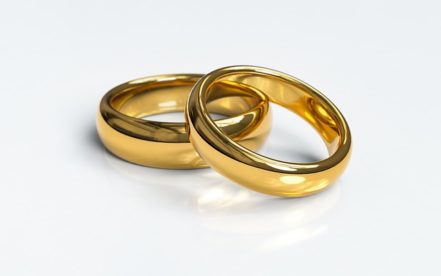
Marriage
Until the Marriage Act of 1753, a marriage was a private matter of mutual consent that was not even necessarily recorded. Sometimes marriages took place in the porch of a church, but not inside. Couples could separate but not divorce (this was introduced in the Reformation). Engagements, or ‘handfastings’, were similar to agreeing a contract, with hand-holding sealing the deal.
After 1753 the minimum age for marriage was 21 and weddings had to be held in a church. Registry offices were established in 1836 for couples wanting non-religious weddings. The 1929 Ages of Marriage Act reduced the minimum age to 16 with parental consent. The 2013 Marriage (Same Sex Couples) Act allowed homosexuals to marry in registry offices. It is illegal to marry a relative closer than a cousin, though marriage of cousins is frowned upon. Adopted people can marry anyone in their adopted family except for the parents, but this is also rare.
One marriage ritual now performed only as a nod to our Victorian past is the prospective husband requesting permission from the father for his daughter’s hand in marriage. This used to be because the husband inherited his father-in-law’s property. A woman therefore had to be very selective in her male acquaintances.
(Top image: pixabay.com)
